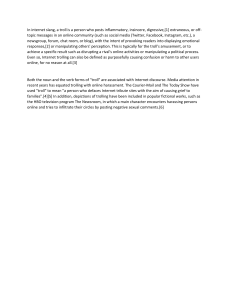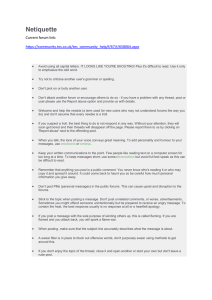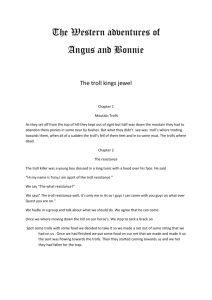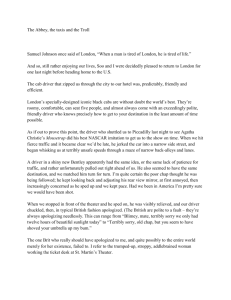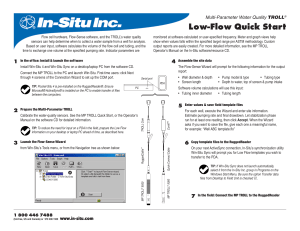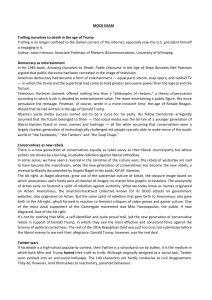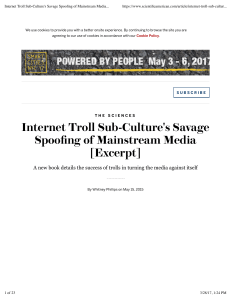Internet Trolls - (Negative Feedback) Step One
advertisement
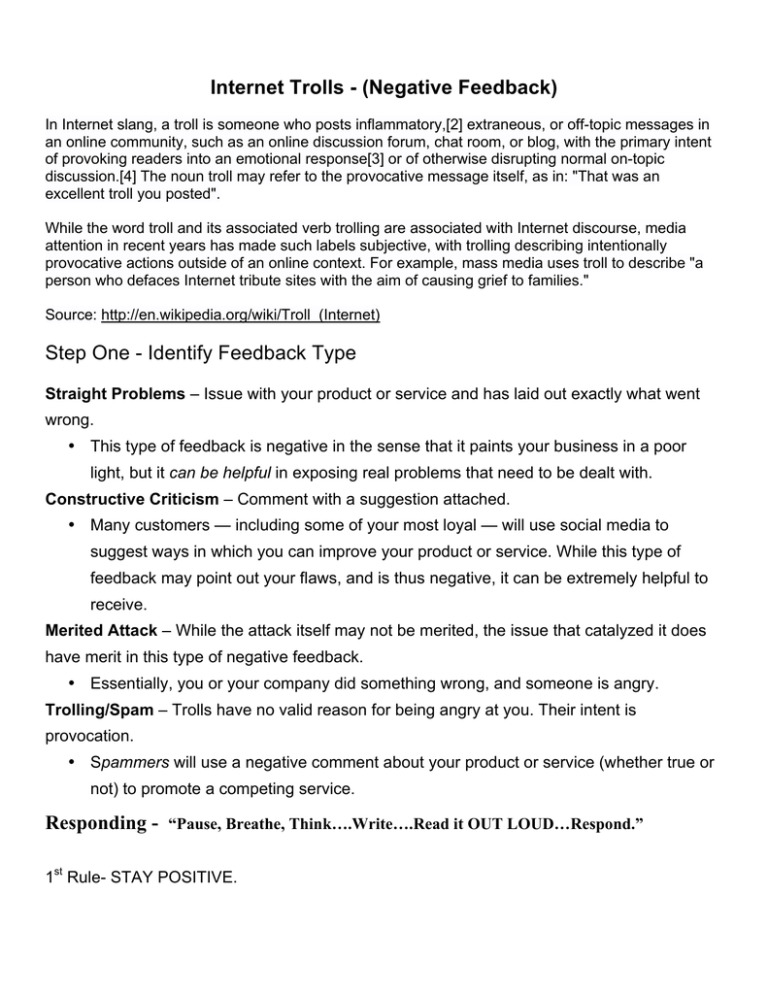
Internet Trolls - (Negative Feedback) In Internet slang, a troll is someone who posts inflammatory,[2] extraneous, or off-topic messages in an online community, such as an online discussion forum, chat room, or blog, with the primary intent of provoking readers into an emotional response[3] or of otherwise disrupting normal on-topic discussion.[4] The noun troll may refer to the provocative message itself, as in: "That was an excellent troll you posted". While the word troll and its associated verb trolling are associated with Internet discourse, media attention in recent years has made such labels subjective, with trolling describing intentionally provocative actions outside of an online context. For example, mass media uses troll to describe "a person who defaces Internet tribute sites with the aim of causing grief to families." Source: http://en.wikipedia.org/wiki/Troll_(Internet) Step One - Identify Feedback Type Straight Problems – Issue with your product or service and has laid out exactly what went wrong. • This type of feedback is negative in the sense that it paints your business in a poor light, but it can be helpful in exposing real problems that need to be dealt with. Constructive Criticism – Comment with a suggestion attached. • Many customers — including some of your most loyal — will use social media to suggest ways in which you can improve your product or service. While this type of feedback may point out your flaws, and is thus negative, it can be extremely helpful to receive. Merited Attack – While the attack itself may not be merited, the issue that catalyzed it does have merit in this type of negative feedback. • Essentially, you or your company did something wrong, and someone is angry. Trolling/Spam – Trolls have no valid reason for being angry at you. Their intent is provocation. • Spammers will use a negative comment about your product or service (whether true or not) to promote a competing service. Responding - “Pause, Breathe, Think….Write….Read it OUT LOUD…Respond.” 1st Rule- STAY POSITIVE. Adding more negativity to the conversation by letting yourself be drawn into a fight with a customer or user will only reflect poorly on your business. Straight Problems – Response is usually necessary. Whether that response is personal (direct) or a broad public-facing message depends on how widespread the problem is - and how many people reported it. Regardless, if a real problem exists, steps should be taken to fix it and customers should be notified that those steps are being taken. Remember that there will be times when such criticism is the result of a perceived problem rather than an actual problem (e.g., someone who just doesn’t like the method by which you do something). Even this type of complaint should be given a response, if only to say, “Thanks for bringing it to our attention, but here’s why we do it that way.” Constructive Criticism – Requires a response. Certainly there will be times when you won’t want to implement the suggestion given — probably most times you won’t — but you’ll build loyalty and trust by responding to criticism with a positive message. It is well worth the effort to thank those consumers who took the time to provide you with a suggestion or point out your product’s flaws. Merited Attacks - More likely to feel personal, try to keep in mind that this type of feedback, as harsh as it may be, has a basis in a real problem. It is best to respond promptly and with a positive vibe (e.g., thank the commenter for the feedback and assure them that steps are being taken to correct the issue or mitigate their problem, such as offering a partial refund). Troll/Spam – Does NOT require a response. In fact, it is almost always best not to respond to Trolling or Spam. Designed to bait you into an unnecessary and image-damaging fight, or to siphon off your customers using underhanded tactics. You should always ignore this variety of feedback, and when appropriate, remove it as soon as you spot it. Source: http://mashable.com/2010/02/21/deal-with-negative-feedback/
